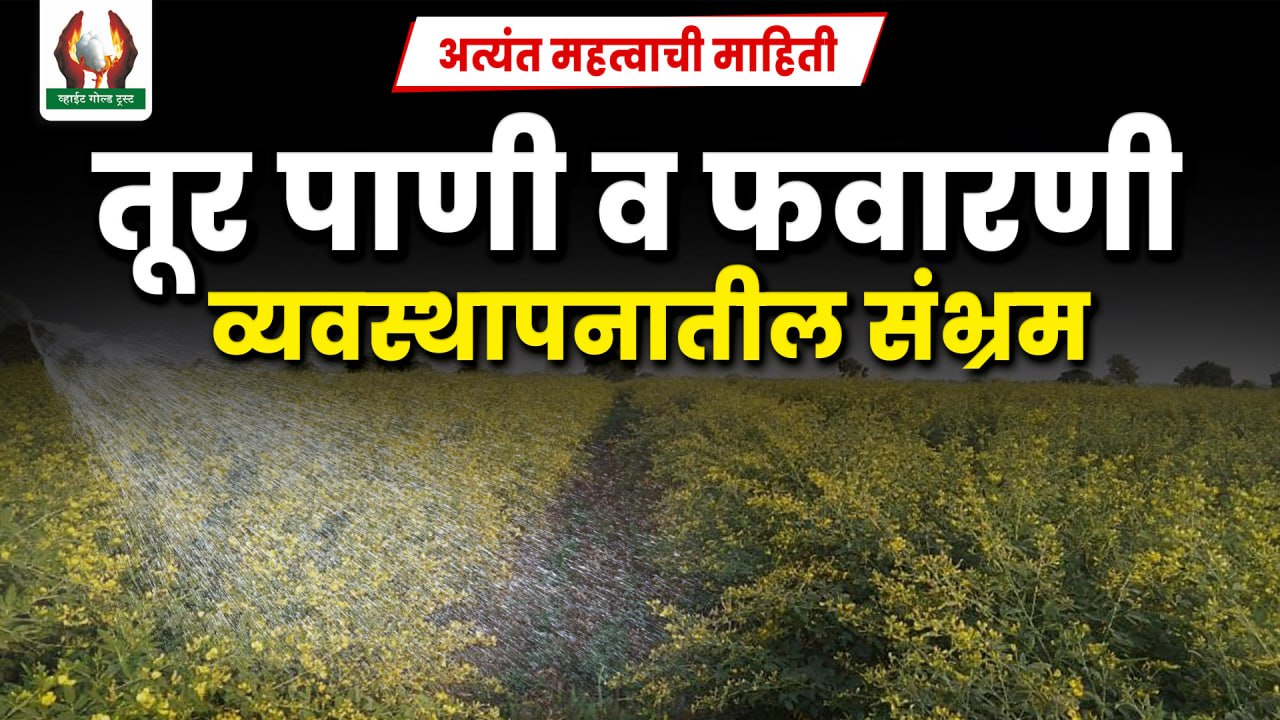Confusion in Water and Spray Management in Pigeon Pea Crop

Introduction:
Pigeon pea (Tur or Arhar) is one of the most important pulse crops in India.
However, improper water and spray management at different growth stages can cause a significant drop in yield.
Due to recent irregular rainfall, excess moisture, and flower drop, many farmers are confused about what to do at which stage.
In this blog, we will understand water management, proper spray stages, and measures to restore the crop after flower drop.
1. Common Water Management Mistakes and Their Effects
Overwatering pigeon pea can be harmful.
Watering should be done only at the start of flowering and again during the pod-filling stage.
In recent days, rainfall in many regions has disturbed crop schedules.
In some cases, water was given and then heavy rains occurred, creating excess soil moisture, which led to severe flower drop.
2. What to Do After Flower Drop
If flowers have dropped due to rain or overwatering, do not panic.
Encourage the plant to regenerate new shoots and flowers.
Recommended Spray:
-
12:61:00 — 150 g
-
Zep — 20–25 ml
Mix both in 15 liters of water and spray.
This helps in new branch formation and new flowering.
3. Should You Irrigate After Rain?
If it has rained after irrigation and the soil still has enough moisture,
do not irrigate again.
-
One round of moisture is sufficient up to the flowering stage.
-
The next irrigation should be done during pod formation and grain filling.
If you plan to apply fertilizers at that time and soil moisture exists, use:
-
20:20:0:13, or
-
24:24:0:8
4. Correct Spray Stages
There are two crucial spray stages in pigeon pea management.
✅ First Spray (Flower Initiation and Bud Stage):
Objective: To increase flower count and maintain balanced growth.
Spray Combination:
-
Emaan — 10 g
-
Musket — 30 ml
-
Zep — 15 ml
-
12:61:00 — 100 g
-
Zinc EDTA — 15 g
This helps in increasing total flower count and female flower ratio.
✅ Second Spray (After 50% Flowering):
Objective: To control pests, improve pod set, and enhance grain filling.
Spray Combination:
1️⃣ For pest control:
-
Rawdi — 15 ml
-
or Shinzo — 10 ml per pump
(Controls pod borer and flower-feeding insects effectively.)
2️⃣ For better pod filling and grain growth:
-
Boron — 20 g
-
Bharari — 5 ml
-
0:52:34 — 100 g
⚠️ 5. What to Do If Weather Is Humid
If the weather is humid, fungal infections are more likely.
Apply the following fungicide spray
-
Propico — 15 ml, or
-
Sukhai — 30 ml
This protects the crop from leaf spots, anthracnose, and other fungal diseases.
Conclusion:
Proper water management, nutrient balance, and timely spraying can greatly improve pigeon pea yield.
Even after flower drop or excessive rainfall, the crop can recover with correct interventions.
Farmers, remember — timely observation and disciplined management are the keys to higher yield.
